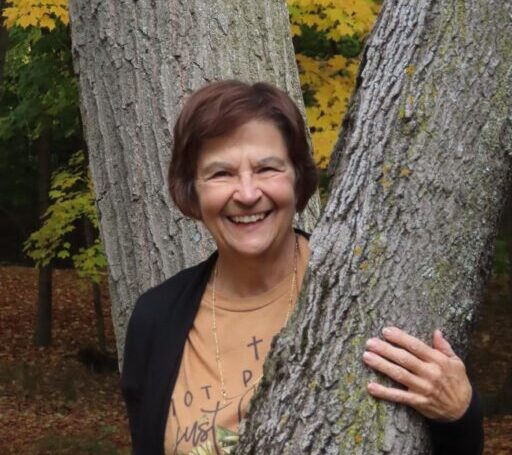We were gathered around my grandmother’s table for Thanksgiving dinner. I was nine years old and like most nine-year-olds I knew what I liked to eat and what I didn’t. So when the tart cranberry salad that Grandma made came around I said, “I don’t like that,” and passed it on. Some of the babbling and laughter ceased, mostly from my parents as I recall. Nothing was said, but I got the feeling this wasn’t over.
Looking back on it as an adult, I am grateful my Dad didn’t call me out on my blunder in front of the family, but at the time, that didn’t cross my mind. I thought that when nothing had been said by milking time that evening, maybe he had forgotten the incident. Or maybe he realized that I felt bad about whatever I had done wrong and was going to leave it at that. But as it turned out, Dad had not forgotten; he was thoughtfully waiting for us to be alone.
Looking up from Bossy’s flank he said, “From now on if you don’t want it, say ‘no thank-you and pass it on to the next person. To say you don’t like something only hurts someone’s feelings.”‘ Dad always explained things in a loving way which only saddened me more when I disappointed him. His reprimand still stands in my memories and through the years has been a reminder to be considerate of others.
I wish I could say that was the end of causing disappointment to my father, but of course, that wouldn’t be true. For instance, there was the time as a new driver, I pulled in to close to our country mailbox and knocked the mirror off the Rambler. Dad was disappointed I hadn’t used better judgement and taken my inexperience into account. (I had watched him a thousand times and he did it smoothly and perfectly.) He explained that I should have gotten out of the car a safe distance away and walked a few steps to the box. I could see after the fact as I handed him the mirror, that that might have been a good idea. Then there was the time in college. I went home for a visit and by this time I had become quite comfortable with coming and going at my own discretion. The hometown gang was spending some time together – more than my parents appreciated. I dragged home in the early morning hours (years before cell phones) to find my father pacing the floor. He reminded me that when I come home, I’m still under their roof and he would appreciate it if I didn’t worry Mom. I wondered why it was; he was the one pacing.
Even though Dad was disappointed at times in each of his childrens’ behaviors he was also quick to show us his love. We seldom heard the words, “I love you,” but there was no doubt in our minds that he did. His actions spoke very clearly of this.
I was fortunate to grow up in a home of loving discipline. They say it is easier for people that have had this kind of relationship with their parents to accept God’s love. My parents were always fair, loving, and responsible adults which made it easy to think of God in those terms as well.
I was well into my thirties when I realized that the majority of others did not grow up this way. A group of five of us were chatting at the nurses station on an uneventful evening in the small hospital where I worked. We started comparing our growing up years. Out of five nurses, I was the only one that had grown up in a consistently loving and nurturing family…the only one who could say they had had a wonderful childhood.
So then…how do people like my co-workers come to trust in a Heavenly Father? I pondered this for some time and then it came to me – it’s an act of faith…like so many other things in our Christian lives. Christianity is built around faith, so why not faith in this? Psalm 91:4 tells us that God’s faithful promises are our armor and protection and one of these faithful promises is given to us in Psalm 68:5. He is a Father to the fatherless.
A new friend and I met in the park this week for coffee. We talked of our childhoods. With a sincere heart she told me how much it meant to her when she became a Christian and knew that now she had a wonderful Father that loved her. She’s just one example of someone, by faith, that has been able to move beyond her earthly experiences and has found joy in the protection of Him. (Psalm 2:12)
You can find it in Him as well.

